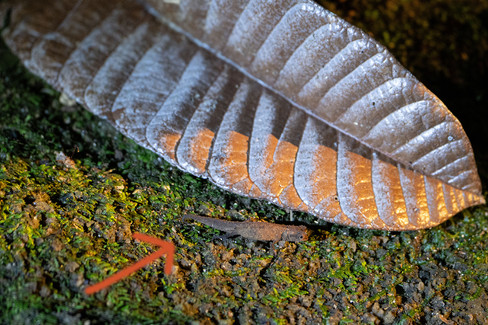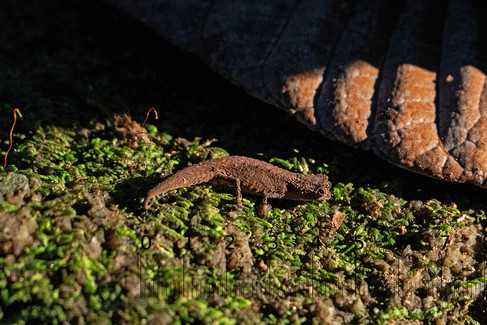Chameleons
- Mala Adi Arul
- Oct 16
- 2 min read

We have been fascinated by chameleons ever since seeing them in zoos and documentaries. Our trip to Madagascar gave us the chance to observe these unique lizards in their natural environment — a pure joy for us both.
The distribution of chameleons is mainly concentrated in Africa, Madagascar, southern Europe, the Middle East, and parts of southern Asia. Madagascar alone is home to nearly half of all known chameleon species, showcasing a rich diversity that has evolved due to the island’s unique habitats.
Chameleons are a distinctive group of lizards belonging to the family Chamaeleonidae, known for their unique biological traits. They’re Masters of Balance and Grip as they possess zygodactylous feet, prehensile tails, and independently mobile eyes, which allow them to look in two different directions simultaneously.

One of their most remarkable features is their ability to change skin color, a process controlled by special pigment cells called chromatophores. This color change aids in communication, temperature regulation, and camouflage.
Their long, sticky tongues can extend up to twice the length of their body, enabling them to capture prey with exceptional precision and speed. A chameleon’s tongue can extend up to twice its body length and shoot out in less than 0.07 seconds — faster than the blink of an eye!

Miniature Marvels Exist - The Brookesia micra, found in Madagascar, is the world’s smallest chameleon — and one of the smallest reptiles overall. Adults measure just about 2.5 centimeters (1 inch) from nose to tail tip! Despite their tiny size, they behave much like their larger relatives. Below are the second and third smallest species which are the Antongil Leaf Chameleon (photo 1 and 2) Brookesia peyrierasi and the last photo depicting Brown leaf chameleon or stump-tailed chameleon Brookesia superciliaris.
Chameleon behavior is equally fascinating and complex. Fossil evidence suggests that chameleons have been around for over 60 million years. They are generally solitary creatures, interacting with others primarily during the breeding season. Territorial disputes, especially among males, are often settled through color displays and body posturing rather than physical fights.
Their slow, swaying movements help them blend with foliage, mimicking the motion of leaves in the wind to avoid predators. Chameleons rely heavily on their vision, as their eyes provide a wide field of view and excellent depth perception for detecting prey and threats.
In terms of reproduction and daily life, chameleons exhibit diverse behaviors depending on species and habitat. Most are oviparous, laying eggs in shallow soil or leaf litter, while a few species give birth to live young. Their diet primarily consists of insects, though larger chameleons may consume small birds or other reptiles. Despite their calm demeanor, they are highly specialized predators with an advanced combination of stealth, speed, and precision. Unfortunately, habitat destruction and the pet trade threaten many species, making conservation efforts crucial for their survival.






















Comments